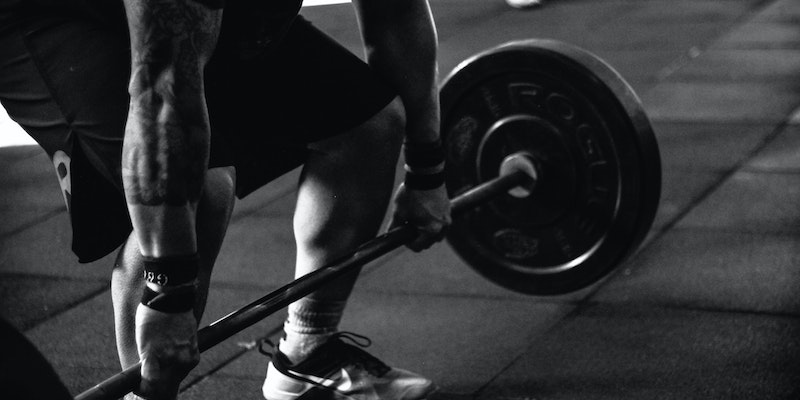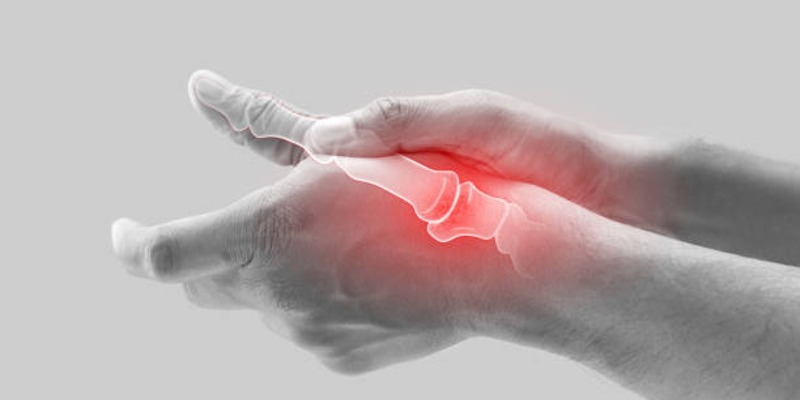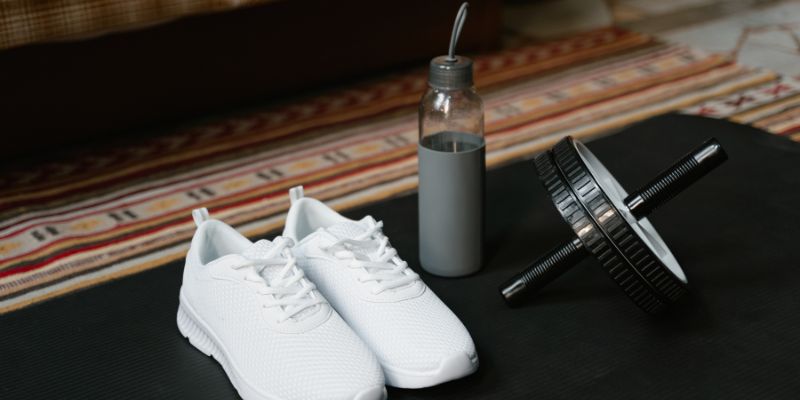Kinesiology tape is a unique form of elastic therapeutic sports tape that helps provide stability and support for joints, muscles, and ligaments. This innovative product is becoming increasingly popular among athletes, physical therapists, and healthcare professionals worldwide. Kinesiology tape provides users with short-term pain relief from nagging injuries and long-term strengthening benefits.
Its versatile design allows it to move with the body, providing stretchability and stability – something not found in traditional taping or athletic wrap products! Now let's explore what makes kinesiology tape effective for healing, competing, and overall fitness success.
Kinesiology Tape and How Does it Work
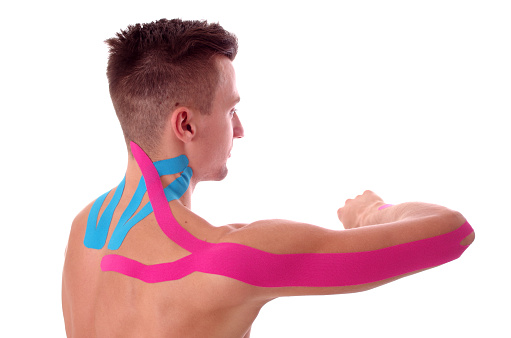
Kinesiology tape is designed to be worn on the skin and provides light yet effective support for muscles, joints, and ligaments without affecting the range of motion. The tape has an elastic base with a cotton fabric overlay that allows it to stretch and move with the body while still providing stability.
It is unique because it can stabilize joints, prevent injury by improving muscle activation patterns, reduce inflammation and swelling in injured areas, and even improve circulation.
Physical therapists, chiropractors, and sports medicine doctors have used kinesiology taping techniques since the 1970s to promote healing from injuries and improved athletic performance.
Applying kinesiology tape helps create a micro-massage effect beneath the skin, stimulating circulation and fascial movement. This can help reduce pain by decreasing swelling and inflammation and improving joint stability by providing support while allowing a full range of motion.
Types of Kinesiology Tape
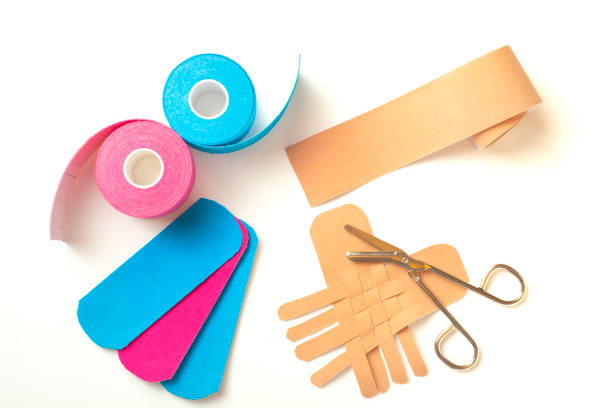
Kinesiology tape is available in various sizes, colors, and styles.
- Pre-cut strips are the most commonly used type of kinesiology tape and come in various sizes and shapes to meet different needs.
- Rigid tape: This is a stiffer type of kinesiology tape that provides extra support for joints and muscles.
- Specialty tape: Kinesiology specialty tapes such as SpiderTech or RockTape come with printed patterns designed to target specific areas like the shoulder or lower back, making them easier to apply accurately.
- Decorative tape: Decorative kinesiology tapes are colorful styles designed for fun and fashion – great for an athletic event or costume party.
Kinesiology tape effectively supports muscles, ligaments, and joints and reduces pain and inflammation. Its versatile design allows it to move with the body while still providing stability, making it an ideal choice for athletes and healthcare professionals. With so many types of tape available, a kinesiology tape can meet any need.
Next time you’re looking for an effective way to reduce pain and improve mobility, consider kinesiology tape – your body will thank you.
Benefits of Kinesiology Tape
Kinesiology tape is an effective tool for pain relief, injury prevention, and athletic performance. Here are some of the ways kinesiology tape can help you:
- Pain Relief: Kinesiology tape helps to reduce soreness and inflammation in the muscles, joints, and ligaments. This allows for improved circulation, which aids in the healing process.
- Injury Prevention: Kinesiology tape can be used to help support weak muscles, joints, and ligaments that are prone to injury. This provides extra stability, which reduces the risk of re-injury or strain.
- Joint Stability: Kinesiology tape helps increase joint stability by providing extra support while allowing a full range of motion. It also helps improve muscle activation patterns, reducing the risk of injuries.
- Improved Circulation: The elasticity of kinesiology tape helps stimulate circulation beneath the skin, promoting healing and reducing pain in injured areas.
- Better Posture: Kinesiology tape can help correct posture by activating muscles that have become weak from overuse or injury.
- Improved Athletic Performance: Kinesiology tape can help improve athletic performance by reducing fatigue and increasing muscle strength and endurance.
- Reduced Swelling: The elasticity of the kinesiology tape helps reduce swelling in injured areas, allowing for a better range of motion and improved healing time.
- Enhanced Comfort: Its lightweight material makes kinesiology tape comfortable even during physical activities such as running or weight training.
Kinesiology tape is an effective tool for pain relief, injury prevention, improved posture, and enhanced athletic performance. Its versatile design allows it to move with the body while still providing stability – something not found in traditional taping products. If you’re looking for a way to reduce pain and improve mobility, consider kinesiology tape – your body will thank you!
Side Effects of Using Kinesiology Tape
Kinesiology tape is a safe and effective tool that provides many benefits, such as pain relief, improved circulation, and better athletic performance. However, like most treatments, some side effects should be considered before use. Here are seven possible side effects of kinesiology tape:
- Skin Irritation: Kinesiology tape can cause skin irritation if applied incorrectly or left on for too long. It’s important to take the time to properly apply the tape and make sure that you don’t leave it on for more than three days at a time.
- Allergic Reaction: Some people may experience an allergic reaction to the adhesive used in kinesiology tape. If you experience any type of allergic reaction, it’s best to stop using the tape and consult a doctor.
- Muscle Weakness: Kinesiology tape can help support weak muscles, but they may become even weaker with long-term use as they depend on extra support.
- Reduced Mobility: While kinesiology tape helps improve mobility in some areas, it can also limit mobility in others if applied incorrectly or left on for too long.
- Pain Relapse: Long-term use of kinesiology tape may lead to pain relapsing when the tape is removed due to weakened and overused muscles not properly supporting themselves without external assistance.
- Numbness: Applying kinesiology tape too tightly can cut off circulation leading to numbness in the affected area.
- Bruising: Kinesiology tape may leave behind bruises if not applied correctly or left on for too long. It’s important to be aware of your body and remove the tape when you feel pain or discomfort.
When used properly, kinesiology tape is a powerful tool, but it’s important to be aware of the potential side effects of overuse or incorrect application. If you have concerns about using kinesiology tape, consult your doctor before starting a treatment plan.
FAQS
Who should use kinesiology tape?
Kinesiology tape is a safe and effective tool for athletes, physical therapists, healthcare professionals, and anyone experiencing pain or discomfort in their muscles or joints.
How long can you leave the kinesiology tape on?
Kinesiology tape should be left on for up to three days. It’s important to take the time to properly apply the tape and remove it after the recommended amount of time.
Can I apply Kinesio tape myself?
Yes, there are many tutorials and videos online that provide step-by-step instructions on how to properly apply kinesiology tape.
However, if you have any doubts or questions about the technique, it’s best to consult a healthcare professional for further guidance.
Conclusion
Kinesiology tape can give your body the support it needs while performing the activities you enjoy. As shown by its various techniques, kinesiology tape has proven to successfully help with conditions ranging from minor ones such as bruises and sprains to single joint complexes to major issues like back pain.
Athletes often use this type of taping for performance benefits and injury prevention. After understanding what kinesiology tape is, it becomes clear that research shows several potential associated benefits.






